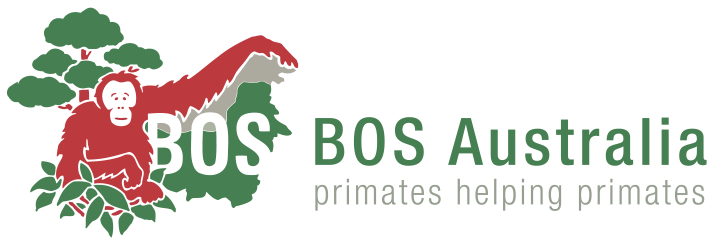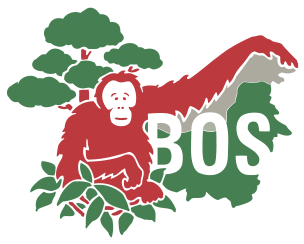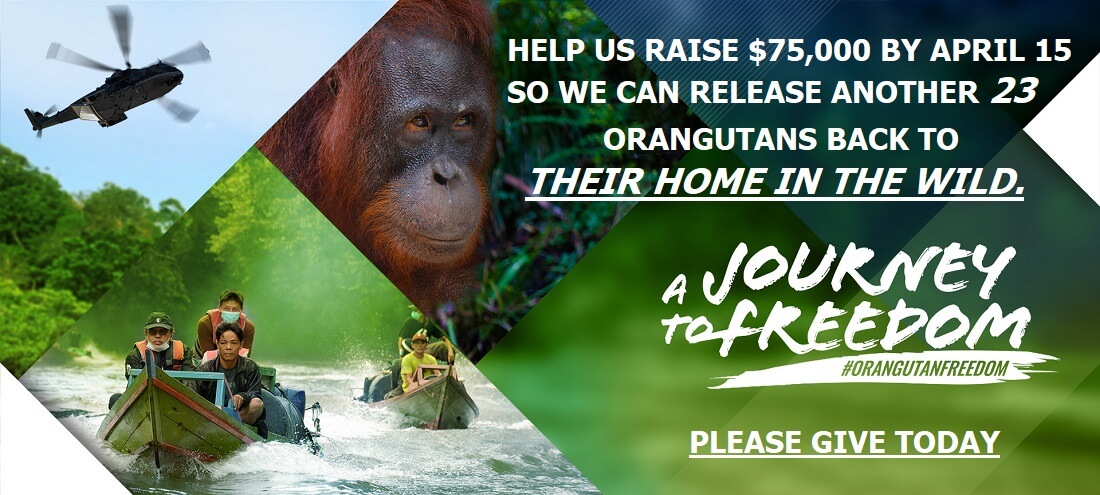Protecting jungles: one way to combat global warming
Protecting Jungles: One Way to Combat Global Warming
Time: ANDREW MARSHALL / ULU MASEN Monday, Nov. 30, 2009
There are two important things to know about tracking wild elephants, and it’s better to learn both of them before you’re actually in the jungle, tracking wild elephants. First, elephants are fast. In thick forest — in this case, the vast Ulu Masen ecosystem in the Indonesian province of Aceh, where leeches writhe beneath your feet and white-handed gibbons hoot from the treetops — they can outpace even deer. Second, elephants can’t climb trees. This is good, because that’s precisely what you’re meant to do if one of them charges.
Or at least that’s the advice of the jungle- hardened rangers who patrol just one corner of this 1.9 million – acre (7,700 sq km) wilderness. They are trained by the London-based conservation group Fauna and Flora International (FFI) to protect Ulu Masen from illegal loggers and poachers, who greedily eye its valuable hardwoods and teeming wildlife: elephants, gibbons, tigers, leopards, bears, pythons and scaly anteaters. The rangers’ work might seem remote from the modern world, but it has implications far beyond Ulu Masen’s frontiers — from Africa and the Amazon, which along with Indonesia are home to what’s left of our rain forests, to the meeting rooms of Copenhagen, where thousands of delegates will arrive for next month’s historic climate-change conference.
Green plants use light to transform carbon dioxide, absorbed from the atmosphere, and water into organic compounds, with oxygen as a by-product. The process is called photosynthesis, and it enables forests like Ulu Masen to play a critical role in regulating our climate. Forests store an estimated 300 billion tons of carbon, or the equivalent of 40 times the world’s total annual greenhouse-gas emissions — emissions that cause global warming. Destroy the trees and you release that carbon into the atmosphere, putting the great challenge of our age — averting catastrophic climate change — beyond reach. Forest destruction accounts for 15% of global emissions by human activity, far outranking the total from vehicles and aircraft combined. Forests are disappearing so fast in Indonesia that, incredibly, this developing country ranks third in emissions behind industrial giants China and the U.S. Since 1950, estimates Greenpeace, more than 182 million acres (740,000 sq km) of Indonesian forests, the equivalent of more than 95 Ulu Masens, have been destroyed or degraded.
The good news is that protecting forests “is one of the easiest and cheapest ways to take a big bite out of the apple when it comes to emissions,” says Greenpeace spokesman Daniel Kessler. Ulu Masen will be one of the first forests to be protected under a pioneering U.N. program called REDD — Reducing Emissions from Deforestation and Forest Degradation in Developing Countries — that offers a powerful financial incentive to keep forests intact. Here’s how it works. Preserve Ulu Masen, and over the next 30 years an estimated 100 million tons of carbon are prevented from entering the earth’s atmosphere — the equivalent of 50 million flights from London to Sydney. Those savings can be converted into millions of carbon-offset credits, which are sold to rich countries and companies trying to meet their U.N. emissions-reduction targets. The revenue produced by the sale of credits is then ploughed back into protecting the forest and improving life in communities living along its edge, thereby giving people a reason to leave the trees standing. In other words, forests are better REDD than dead.
With schemes now proliferating across Indonesia and the globe, the U.N. estimates that REDD revenues could pump up to $30 billion a year into the developing world, promising much-needed revenue at a time when rich nations still haggle over how much money to give poorer countries to help them adapt to climate change. REDD will likely be part of any global climate pact negotiated in Copenhagen. “Everyone has got a lot of hope in REDD,” says Joe Heffernan, an expert in environmental markets at FFI. “It’s a big one.”
The Money Tree
Ulu Masen received a boost last year when U.S. bank Merrill Lynch pledged to invest $9 million over four years. “That gave the project a lot more certainty,” says Dorjee Sun, chairman of Sydney-based firm Carbon Conservation, which is helping Aceh’s provincial government devise the scheme. “It showed there was appetite from investment banks to buy these credits.” Merrill Lynch calls Ulu Masen “the world’s first commercially financed avoided deforestation project.” Money has been followed by political muscle: a year later, Arnold Schwarzenegger of California, along with the governors of Wisconsin and Illinois, signed a deal committing the state to finding ways to incorporate forest credits within U.S. carbon-trading systems. Ulu Masen is expected to generate $26 million in carbon credits in its first five years.
Humans won’t be the only animals to benefit. Clearing land for palm-oil plantations is Indonesia’s leading cause of deforestation, says a 2007 U.N. report, with Sumatra, Kalimantan and Papua the three worst-affected provinces. Thanks largely to the global appetite for palm oil, which is found in everything from chocolate bars to biofuels, the natural habitat of endangered animals such as the orangutan and Borneo rhino shrinks further each year. REDD could save them, said a recent study of Kalimantan by researchers from the University of Queensland in Australia. They believe that the revenues generated by preserving a forest could not only compete with the profits of cutting it down for palm oil but also fund biodiversity projects to put the brakes on species extinction. REDD could “fundamentally change conservation [in tropical countries] and provide benefits for mammals at a scale we’ve never seen before,” writes its lead author Oscar Venter. If REDD’s champions seem almost religious in their support, it is partly because the scheme appears to contain so many holy grails. Done right, its advocates say, REDD will alleviate poverty, preserve rain forests, protect endangered species and do more to avert catastrophic climate change than grounding jets and banning coal. It also offers a rare partnership between two disparate and often conflicting worlds: capitalism and conservation. With REDD, you can save the planet and make money.
Not so, say its equally passionate critics. Conservationists agree that our remaining forests must be saved, and quickly. Where they disagree is how REDD is funded. Many are fundamentally opposed to a carbon-offset system that only safeguards forests by allowing rich nations to pollute. “We need to find ways to stop burning fossil fuels, not create massive new loopholes to allow the pollution to continue,” says Jakarta-based Chris Lang, who runs the website REDD-Monitor. “Carbon-trading does not reduce emissions.” Lang believes funding REDD schemes through offsets or other market-based mechanisms would be a “disaster.” Still, if all goes to plan, Ulu Masen could be the first REDD scheme to sell forest credits.
Into the Wild
There are several unique aspects to Aceh that have allowed the scheme’s creators to blaze a trail. First, a decades-long separatist insurgency by the Free Aceh Movement (GAM) saved the province from the logging frenzy seen across the rest of Sumatra. “If you went into the forest back then there was a chance you’d get shot,” says Matthew Linkie, an FFI technical manager based in the province’s capital Banda Aceh.
GAM signed a historic peace deal with the Indonesian government in 2005, in the wake of the devastating Indian Ocean tsunami, which claimed about 160,000 lives in Aceh alone. Today, Aceh’s governor is a tsunami survivor and former GAM rebel called Irwandi Yusuf, whose background seems tailor-made for REDD: he was trained as a veterinarian and once worked for FFI. “He’s one of the few Indonesian politicians who gets it,” says Linkie. “He’s thinking way beyond his five-year electoral term.” In June 2007 Irwandi banned commercial logging in his province, “an unprecedented environmental act” for Indonesia, says Linkie.
Named after a 7,840-ft.-high (2,390 m) mountain within its borders, Ulu Masen is only slightly smaller than Yellowstone National Park, or about 10 times the size of Singapore. It is patrolled by forest rangers employed by the provincial government and by FFI-funded community rangers, many of them once with GAM. Ulu Masen has helped solve a major challenge for postconflict Aceh: finding jobs for ex-combatants. “In theory,” says Linkie, “you’ve got a pool of well-trained forest experts with jungle skills. They make great rangers.”
I joined the rangers near the remote village of Geumpang. It is a six-hour drive from the provincial capital Banda Aceh along a semipaved mountain road winding up through dense forest. In places, a line of vehicles backs up as mechanical diggers clear rockfalls. Troupes of long-tailed macaques tumble down from the trees to beg from passing motorists.
Geumpang sits in a valley of rice fields at the heart of Ulu Masen. It is famous for its fertile soil and the gold sometimes found in its rivers. Raked by clouds, it is also famously wet: some people joke that the name Geumpang is a contraction of gerimis panjang, the Indonesian for “constant drizzle.” A no-go area during the conflict — GAM rebels passed through there on their way between Aceh’s east and west coasts — it is now a peaceful place. Children walk to school past paddy fields of ripening rice, while glistening water buffalo wallow in pools of mud.
An hour from Geumpang is an FFI camp manned by 10 so-called community rangers, all trained and salaried by FFI, all former poachers, loggers or GAM guerrillas. Keeping them company are five mahouts and their elephants, which are employed for jungle patrols. The camp was set up a year ago. Conditions are basic. The rangers live in tents near a shallow river flowing past overgrown farmland abandoned during the conflict but now slowly being recultivated by returning locals. Insects shriek from the thick jungle beyond. The rangers have discovered that they can get a weak signal — just enough to send text messages to family or friends — if they strap their cell phones to lengths of bamboo driven into the ground at certain points around the camp. So outside every tent there are phones on sticks, like tribal totems.
FFI has already trained 45 community rangers and hopes to have a total of 150 protecting Ulu Masen by the end of next year. They are paid about $160 a month. Over 10 days, the recruits are taught survival skills, navigation, climbing and search and rescue. A graduation ceremony is held in a river at night, lit by flaming torches, where they are dunked beneath the water then hugged by their trainers. “It’s like they’ve been cleansed, absolved of their pasts,” says Linkie.
The Human Touch
Kamarullah, 43, once carried an ak-47 assault rifle through this forest. Today, he grips four fireworks in one hand and a disposable lighter in the other, to scare off wild elephants. Kamarullah, who goes by a single name, is a lithe, taciturn man who spent eight years fighting for GAM; one of his five daughters was born in hiding in the jungle. How many enemy troops did he kill? “I didn’t count,” he says, grinning shyly.
A week after the 2005 peace deal was signed, Kamarullah emerged from the jungle to rejoin his family, but struggled to support them until joining the rangers. In GAM, he says, “we had an ideology and a purpose.” With the rangers, this expert navigator with an intimate knowledge of the area now feels like he is fighting for his homeland again. “I want to protect the animals,” he says. “I’m worried they’re dying out. We used to find deer near the village, but now they’re gone.” Still, the rangers are having an impact. “Before, there were maybe 40 people logging in this area,” estimates Kamarullah. “Now there are only 10.”
Wild elephants, not loggers, are the rangers’ main problem right now. Crops planted by returning farmers are proving irresistible to two local herds. At a farm nearby, elephants have trampled banana and cacao trees, toppled betel-nut palms and left jumbo-size footprints in the fishponds. There, at the forest edge, humans and animals must coexist. Each morning, the calls of gibbons compete with the calls to prayer from nearby village mosques.
Protecting crops from marauding elephants might seem peripheral to the task of preserving Ulu Masen. So might FFI’s nursery in Geumpang, where farmers can learn grafting techniques and buy fruit-tree saplings at bargain prices. But both activities are designed to improve the livelihoods of local people, who are key allies in any REDD scheme. “These communities have to benefit,” says Linkie. “That’s the whole idea. They’re getting an incentive not to cut [the forest] down”.
Few incentives are more tangible than cash. Conservationists are considering cash payments to farmers in the Brazilian state of Mato Grosso to stop them destroying the forest for agriculture. But with 120,000 households around Ulu Masen, even a multimillion-dollar sale of carbon credits might amount to only $100 to $200 a year per family, estimates Linkie. The money might be better pooled to build schools, bridges or other projects that would benefit the entire community. However it is distributed, a very clear message must be sent to the local communities, says Linkie: “You’re getting this [money] because you’re not cutting down the forest.”
That message is being heard across this vast archipelago and beyond. Indonesia alone has a dozen or more REDD projects. “It’s this new fad — everyone needs to have one,” says Linkie. “It’s good that governors from other provinces are [saying], ‘Must have a REDD project’ rather than ‘Let’s log it all and convert it into oil palm.'”
In partnership with the Australian investment bank Macquarie Group, FFI has six other REDD schemes: three in Indonesia and others in Cambodia, Ecuador and Liberia. Last month, governors Irwandi and Schwarzenegger joined 30 other subnational leaders — including a dozen other U.S. governors and the leaders of forest-rich Brazilian states Amazonas and Mato Grosso — at a climate summit in Los Angeles, where they called upon governments to include REDD within the global framework for combating climate change. Sun of Carbon Conservation hopes one day to see “a global infrastructure of forest factories, producing oxygen and absorbing carbon dioxide.”
But REDD has its risks. The first is so-called leakage: halting deforestation in one area might simply drive loggers into another. “Permanence is a huge problem,” says Kessler of Greenpeace, citing another worry. “How do we know these areas are going to stay protected? What happens if a forest burns to the ground?” A third concern is calculating how much carbon is stored in a forest, and what emissions are actually avoided by preserving it. In September a multinational research team led by French landscape ecologist David Gaveau asserted that the Ulu Masen scheme might not significantly reduce deforestation in northern Sumatra because much of the ecosystem is upland, inaccessible and therefore unlikely to be logged anyway.
FFI rebuts this. Ulu Masen borders another protected area called Leuser, also being developed as a REDD scheme, so leakage is not an issue within Aceh province. (The rest of Sumatra is another matter.) As for permanence, FFI has a “reserve pool” of forest to replace any lost to fire or disease, and promises “robust” accounting methods and monitoring by both satellite and field team. It says the calculations in the Gaveau report are incorrect and that Ulu Masen has “substantial lowland forests at risk.”
The Politics of Climate Change
Greenpeace wants wealthy industrialized nations to pay into a U.N.-run REDD fund that would protect priority areas of deforestation in Indonesia, Congo and the Amazon. A $40 billion – a-year fund “could get us to zero deforestation by 2020 — globally,” says Kessler. But will rich nations cough up that much? The U.S., the E.U. and Japan are all “willing to put money on the table” for REDD, he adds. “Just to put it into perspective, $40 billion is about a quarter of what the U.S. gave in bailout funds to one insurance company, AIG. The money is there. It’s just a question of political will.”
Already that political will seems to be faltering. A legally binding pact will be impossible to achieve at the climate-change summit in Copenhagen, said U.S. President Barack Obama and other world leaders at the just-concluded APEC meeting in Singapore. Back in the U.S. — cumulatively still the world’s biggest polluter — a bill to cut, by 2020, emissions to 20% below 2005 levels faces a bruising and uncertain journey through the Senate. Washington and Copenhagen: whatever happens in the rain forests, it is in these two distinctly nontropical cities that the fate of our remaining rain forests, and our warming planet, lies.





